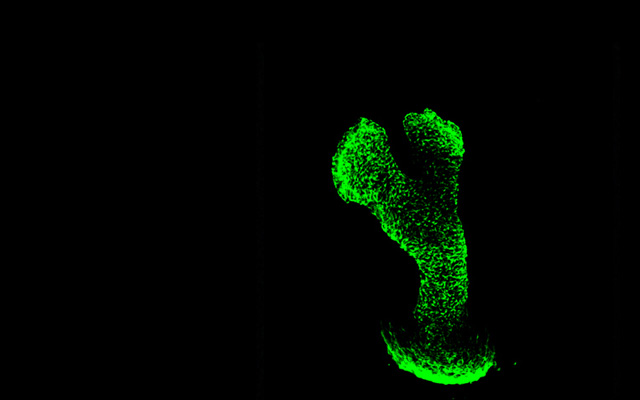The Relationship Between ZIC2 in Oral Squamous Cell Carcinoma Tissue and Pathological Characteristics and Prognosis
HUANG Erjiang¹, ZHOU Guilong², WU Baolei3*
This study aims to analyze the expression of ZIC2 (zinc-finger protein of the cerebellum 2) in OSCC and its correlation with patient prognosis. Cancer tissues and adjacent tissues were collected from 89 OSCC patients diagnosed between February 2019 and February 2021 at the 987th Hospital of the Joint Logistics Support Force of the Chinese People’s Liberation Army. The expression levels of ZIC2 were detected using immunohistochemistry, qRT-PCR (real-time quantitative polymerase chain reaction), and WB (Western blot). The expression of ZIC2 in different tumors was analyzed using the GEPIA2 and BEST platforms. The predictive value of ZIC2 for the 3-year survival rate in OSCC patients was evaluated using time-dependent ROC (receiver operating charac teristic) curves and K-M (Kaplan-Meier) survival curves. Prognostic factors were identified through multivariate Cox regression analysis. qRT-PCR results showed that the expression of ZIC2 in OSCC cancer tissues was signifi cantly higher than in adjacent tissues (P<0.000 1). Immunohistochemistry results showed that the positive rate of ZIC2 in OSCC cancer tissues was 71.91% (64/89), significantly higher than the 28.09% (25/89) in adjacent tissues (P<0.001). Multivariate Cox regression analysis found that ZIC2 expression (P=0.001, HR=4.993), clinical stage (P=0.003, HR=5.267), and lymph node metastasis (P=0.026, HR=2.458) were independent prognostic factors for the 3-year survival rate of OSCC patients. The Nomogram model based on Cox regression analysis demonstrated high accuracy in predicting the 3-year survival rate, with an AUC value of 0.793. ZIC2 was highly expressed in OSCC, and its high expression was significantly associated with clinical stage and lymph node metastasis in pa tients. Multivariate analysis indicated that high expression of ZIC2 was closely related to poorer prognosis in OSCC patients. This suggests that ZIC2 can be a potential prognostic biomarker for OSCC, providing important references for clinical staging, metastasis assessment, and treatment decision-making.




 CN
CN EN
EN